
There are attributes a vehicle must have to cement it as a successful long-haul expedition rig capable of conquering the Australian outback.
Off-road capability, touring range, load-carrying capacity and reliability are prerequisites, but there are plenty of other factors that separate the pretenders from the real deal when it comes to touring Australia.
An expedition vehicle also needs to be tough, practical and functional. There needs to be a good range of aftermarket accessories available for it, to suit the demands of the job at hand. If you can’t equip it with gear to protect it in the scrub, or gear to help it safely haul all the items you’ll need on a big trip, then it simply won’t make the grade.
4X4 Australia's project builds

Simplicity is also an advantage when it comes to the best 4WD for remote travel. If something breaks in the bush, many miles from help, you need to be able to fix it where it lies.
With modern four-wheel drives this is not as straightforward as it once was, thanks to electronic engine management and traction aids. Luckily, modern vehicles are also far more reliable these days. Still, old-school mechanical fuel management and traction aids are hard to beat.
Taking the above factors into account, 4X4 Australia has come up with a list of the top six rigs suited to long-haul, offroad expedition use.
JUMP AHEAD
- Toyota LandCruiser 70 Series
- Land Rover Defender
- Nissan Patrol GU
- Jeep Wrangler JK
- Ford Ranger/Mazda BT-50
- Toyota LandCruiser 100 Series
1: Toyota LandCruiser 70 Series

Topping the 4X4 Australia list of expedition vehicles is the venerable LandCruiser 70 Series, a vehicle that ticks off just about every attribute required in a long-haul, remote-area offroad tourer.
The LandCruiser is tough, with a full box-section separate chassis, live axles front and rear, coil springs up front and rudimentary but effective leaf springs at the rear.
This simple design gives the LandCruiser good chassis flex when off the beaten track, good body isolation from road noise and vibrations, excellent wheel travel and good load-carrying capacity.
The Cruiser is powered by a grunty yet frugal 4.5-litre V8 turbodiesel engine that’s proven exceptionally reliable since its launch in 2007. It generates a claimed 151kW at 3400rpm and 430Nm from a lazy 1200rpm through to 3200rpm, making it ideal for hauling heavy loads, towing big trailers (up to 3500kg) or slogging through difficult offroad terrain.
4x4 aftermarket: Gear guides

The engine is mated to a five-speed manual transmission and simple part-time 4x4 driveline with manually locking hubs and optional (standard on GXL) front and rear diff locks. This driveline, combined with impressive low-range gearing and the Cruiser’s decent wheel travel, endows the 70 Series with excellent offroad capability.
Double Cab and Wagon variants come with a 130-litre fuel tank while Single Cab and Troop Carrier models are offered with two 90-litre fuel tanks for a touring range in excess of 1500km. There are four body styles on offer, so that means there’s a 70 Series to suit just about every budding adventurer.
The 70 Series is equipped with ABS and dual front SRS airbags, and a revised interior has (almost) dragged the Cruiser into the 21st Century. The air-conditioning system is also second to none, which is bloody important on those long, hot days in extreme environments.

If you want to modify your LandCruiser 70 Series, the aftermarket offers just about everything from protection equipment, suspension kits and GVM upgrades to traction aids, snorkels, roof racks, cargo systems and more.
Toyota offers some of the best parts and service in the country, with a big network of dealers around Australia. If you intend to go global roaming in your 70 Series, the vehicle and parts are available in most corners of the world, although you might struggle in North America; the 70 Series was never officially sold in the USA or Canada.
If you don’t have the dough to stump-up for a new 70 Series LandCruiser, there are loads of second-hand models on the market with plenty of life left in them.
The next best thing to the current TDV8 model, in terms of performance, is the Cruiser equipped with the 1HD-FTE 4.2-litre direct injection turbodiesel engine. But for those who prefer the simplicity of mechanical injection – and who aren’t in that much of a hurry – the 1HZ 4.2-litre indirect injection naturally aspirated diesel is the pick.
2: Land Rover Defender (1990-2016)

To some people the idea of travelling long distances in a Land Rover Defender is hell on earth, but to others there is no better way to explore the most remote places on the planet.
The previous-gen Defender can trace its lineage back to the original Land Rover launched in 1948. Despite its turbodiesel engine and sophisticated electronic traction control system (on 90, 110 Wagon and 110 Double Cab models), the Defender was largely manufactured by hand at Land Rover’s Solihull factory.
The Defender’s aluminium body sits atop a rugged box-section separate chassis. Suspension is by way of live axles front and rear with long-travel coil springs. Payload ranges from just under a tonne in the 90-inch wheelbase model to almost a tonne-and-a-half in the 130-inch Crew Cab model.
If fitted with just two seats, even the short wheelbase Defender 90 offers a decent size cargo area, and many people use this model for remote area expedition travel. The 110 Wagon offers even more space and the cab chassis models can be kitted out to carry a massive amount of gear, or can be set up with a variety of accommodation options.

All models are powered by a frugal yet surprisingly strong 2.2-litre four-cylinder turbodiesel engine that pumps out a claimed 90kW and 360Nm from 2200rpm to 4350rpm. The engine is mated to a six-speed gearbox and a full-time 4WD system with lockable centre differential and two-speed transfer case.
Excellent low-range reduction makes the most of the engine’s low-rpm torque when tackling difficult offroad terrain and good axle articulation endows the Defender with formidable offroad capability.
Although fuel tank capacity is modest in Defenders (60L for the 90 and 75L for 110 and 130 models), the engine is quite frugal. There are also plenty of aftermarket auxiliary tanks available to increase the capacity.
You can source just about anything you want to suit this Defender, from protection equipment, diff locks, suspension kits, roof racks, ladders, cargo systems, water tanks and much more.
Unlike Defenders of old, this generation offers quite a high level of luxury – a modern dash and ventilation/air-conditioning system, as well as optional leather trim.
Still, you’ll have to get used to the cramped cabin that makes driving a Defender a unique experience – window down and elbow out is the most comfortable position.
When it comes to reliability, Land Rover doesn’t have the most enviable reputation – although this is not entirely fair. I have driven Defenders in some of the most remote places on the planet and have never had a serious mechanical failure. And as the Defender is sold all around the world, sourcing parts is rarely a problem.
If you’re looking at older models, the Td5 turbodiesel offers a good combination of performance, fuel economy and reliability. Older 300Tdi and 200Tdi models are getting a bit long in the tooth.
3: Nissan Patrol GU

Like the 70 Series LandCruiser and the Defender, the Nissan Patrol GU is a relatively simple and tough design that’s well suited to remote-area travel.
The big Patrol features a box-section separate chassis, live axles front and rear and coil springs all-round, with rear leaves on some cab chassis variants.
Its wide track and long wheelbase make it a stable platform that is well suited to carrying all the gear you need on a big trip, and it’s available in wagon or single cab chassis configurations.
MY16 models are powered by the ZD30 3.0-litre four-cylinder common rail turbodiesel engine, it makes a claimed 118kW and 380Nm from 2000-2400rpm. Over the years, this engine hasn’t had the best track record and, for remote area travel, 4X4 Australia’s Ron Moon recommends the older mechanically injected TD42T 4.2-litre six-cylinder turbodiesel engine for its simplicity and reliability. Ron should know – he’s driven his stretched Patrol all over the world without a problem.

The Patrol has a simple part-time 4WD system with manually locking hubs on DX models and auto-locking hubs on ST models.
The two-speed transfer case offers reasonable low-range gearing. Excellent axle articulation keeps all four wheels on the ground... most of the time.
The Patrol GU has been on the market in various guises since 1997, so there are plenty of aftermarket accessories available for it, including long-range fuel tanks, water tanks, protection equipment, roof racks, cargo systems and more.
Depending on the tray or camper fitted, the cab chassis variant of the Patrol GU has quite a long rear overhang. There have been examples where the rear chassis section has bent under load. Set it up correctly, however, and this won’t be a problem.
A 3200kg (manual) towing capacity will haul most trailers with ease – at least those designed to tackle genuine offroad conditions.
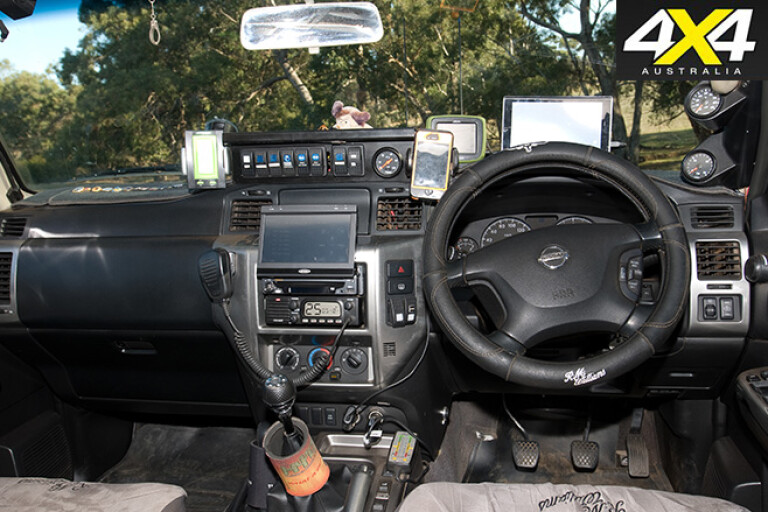
Wagon variants have a carrying capacity between 600-700kg while the cab chassis will carry between 1100kg (coil rear springs) and 1300kg (leaf rear springs).
The interior of the Patrol offers generous space and comfort. There’s plenty of cabin width and the long wheelbase ensures there’s enough legroom for those in the second row of the wagon.
Servicing and parts support is good in Australia and the Patrol GU is sold in many countries around the world other than North America, so if a global expedition is on your bucket list then this is one of the vehicles you could easily do it in. Many parts are interchangeable with the older Patrol GQ, which has been around since the late 1980s.
4: Jeep Wrangler JK

The Jeep Wrangler JK makes the list thanks to its exceptional offroad capability, the fact it’s available with a powerful yet economical turbodiesel engine and because there are so many aftermarket bits and pieces that can transform it into a genuinely capable expedition vehicle.
If you want the Wrangler Rubicon spec, with its standard sway bar disconnects and super low-range gearing, you’ll have to opt for the 3.6-litre petrol V6, which we wouldn’t recommend for long distance expedition work. Still, the base-spec Wrangler Sport is a very capable offroader.
The JK has a separate chassis design with live axles front and rear and coil springs all around. Of the petrol or diesel engine options, the 2.8-litre common rail diesel is the pick for expedition work, pumping out a claimed 147kW of power and a stump-pulling 460Nm of torque from 1600-2600rpm when mated to the five-speed auto transmission, or 410Nm from 2600-3200rpm with the six-speed manual ’box. This engine can achieve fuel economy on the right side of 10L/100km.

The Wrangler is available in traditional two-door short wheelbase guise or the more expedition-friendly four-door long wheelbase Unlimited model. The Unlimited offers much more interior space than the shorty, although load-carrying capacity isn’t great at a shade over 400kg.
As the Wrangler is a US-market vehicle, the list of aftermarket accessories is almost endless, and includes massive suspension lifts, protection equipment, diff locks, super low-range reduction, cargo systems, long-range fuel tanks, water tanks and more.

While not everyone’s cup of tea, driving offroad with the roof down truly immerses you in the environment, and in this respect the Wrangler offers a unique experience. Or you could just fit the hardtop and whack on the air-conditioning.
5: Ford Ranger/Mazda BT-50 (circa 2016)
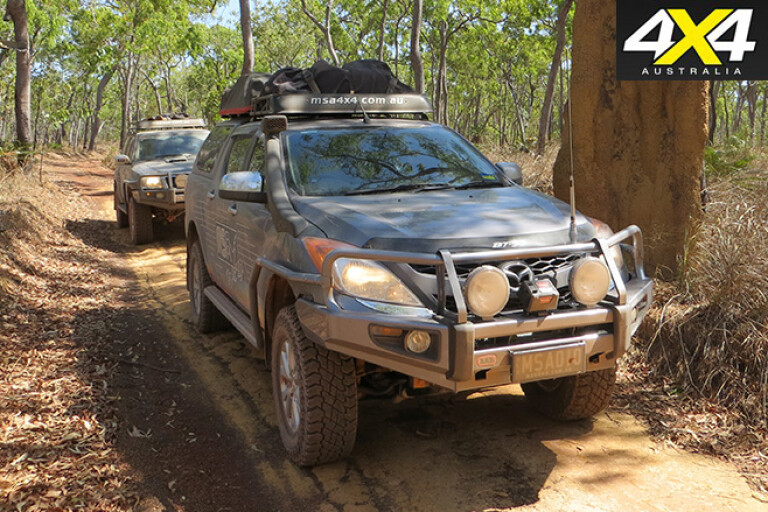
Significantly bigger than competitors such as the HiLux, Navara and Triton, the Ranger/BT-50 was built on a separate chassis with a live axle rear-end with leaf springs and an independent front-end with double wishbones and coil springs.
Load capacity ranges from 1000-1400kg depending on body style and model, so you’ll have no problems hauling all the gear you need for a remote area expedition. Towing capacity is a whopping 3500kg.
Upgrade your Ranger

There are two engines on offer; a 2.2-litre four-cylinder turbodiesel (in the Ranger only) makes a claimed 110kW at 3700rpm and 375Nm of torque from 1500-2500rpm, while a 3.2-litre five-cylinder turbodiesel ups claimed output to 147kW at 3000rpm and 470Nm of torque from 1500 to 2750rpm.
Both powerplants offer more than enough grunt but the bigger five-cylinder engine is the pick, and works well mated to either the six-speed manual or six-speed automatic transmission. Low-range gearing is excellent, with an overall reduction in manual gearboxes better than 50:1 in first gear, and better than 40:1 with the auto in Low.
A combination of electronic and mechanical traction aids endow the Ranger and BT-50 twins with excellent offroad capability, including Dynamic Stability Control (DSC), Hill Descent Control (HDC), Hill Launch Assist (HLA) and a standard electronically locking rear diff.

Both engines average better than 10L/100km, giving the Ranger/BT-50 a touring range of around 800km from its 80L tank. Want more? A number of aftermarket companies manufacture long-range fuel tanks to suit the vehicle.
In fact, you can get all sorts of aftermarket goodies to suit the Ranger/BT-50, from protection gear, snorkels, winches and suspension kits to tub liners, canopies, roof racks and cargo systems.
Even though the Ranger/BT-50 is a ute, don’t let it fool you into thinking it’s a commercial vehicle; top-spec models are as well-equipped as any wagon on the market and offer excellent comfort for those long stints behind the wheel.
The Ranger/BT-50 is available in single, extra and dual-cab models, either as a ute or cab chassis, so there are plenty of options to suit all requirements, even for those who want to fit a camper on the back.
6. Toyota LandCruiser 100 Series

We ummed and aaahed a bit by the time we got down to the bottom of our list of top six expedition vehicles but, in the end we couldn’t go past the Toyota LandCruiser 100 Series – at least, the Standard HZJ105R.
This base-spec LandCruiser manufactured from 1998 to 2007, was the last to be fitted with live axles front and rear with coil springs all around, whereas higher grades were fitted with an independent front suspension that wasn’t as bush friendly as the live axle design.
Being the base-spec Cruiser, you need to look at the Standard as a blank canvas. It has a bare-bones interior with low-rent cloth seats and vinyl trim, skinny steel rims and a basic barn door arrangement at the back. But that can be a good thing, and there are plenty of examples on the market that have already been modified for expedition travel.
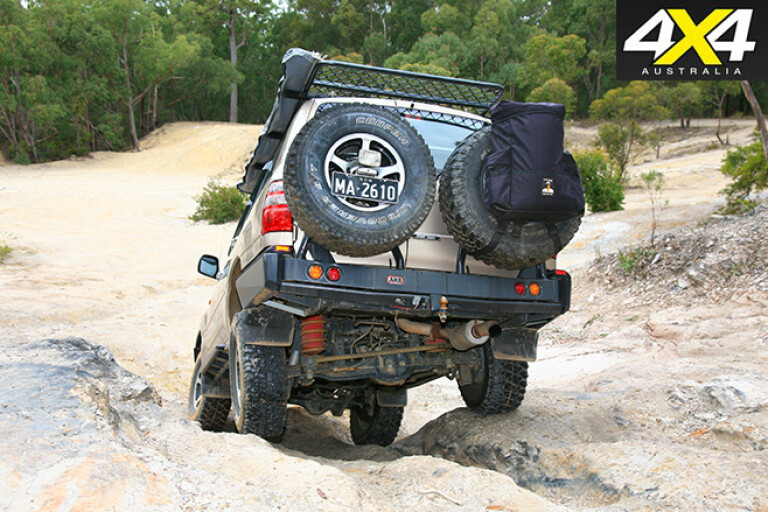
Power comes from a lethargic and somewhat asthmatic 1HZ indirect injection, naturally aspirated 4.2-litre six-cylinder diesel, which is claimed to make a modest 96kW at 3800rpm and 285Nm of torque at 2200rpm.
But this simple engine is supremely reliable and relatively easy to fix if something goes wrong. And you can always fit an aftermarket turbo and intercooler to extract plenty more power from it. There’s also a 4.5-litre petrol version, but we wouldn’t recommend that for long distance expedition travel.
The standard 145L fuel capacity sounds pretty good, but the old 1HZ isn’t as fuel efficient as modern electronically injected turbodiesel engines. Expect consumption of around 12.5L/100km for standard vehicles in a good state of tune, and significantly more when fully laden and driving off road. Luckily there are plenty of long-range fuel tank options on the market.

A 900kg payload means you can kit this Cruiser out with all the goodies you like and still have plenty of capacity to carry a heap of gear for extended remote area expeditions. And there are plenty of goodies available to suit the 100 Series, such as protection gear, suspension kits, diff locks, snorkels, roof racks, luggage systems, performance parts and more.
Sourcing parts for the 100 Series is possible just about anywhere in the world. The HZJ105 was sold in Australia, Africa, Asia, the Middle East and South America, and
while not sold in Europe or North America those continents got other versions of the IFS 100 Series, and various parts are interchangeable.
The best thing about the LandCruiser 100 Series Standard? You can pick them up for as little as $10K! But be willing to spend more for a model with low kays, few signs of offroad abuse and appropriate modifications.





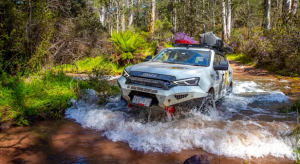

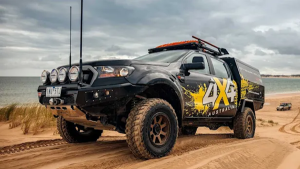










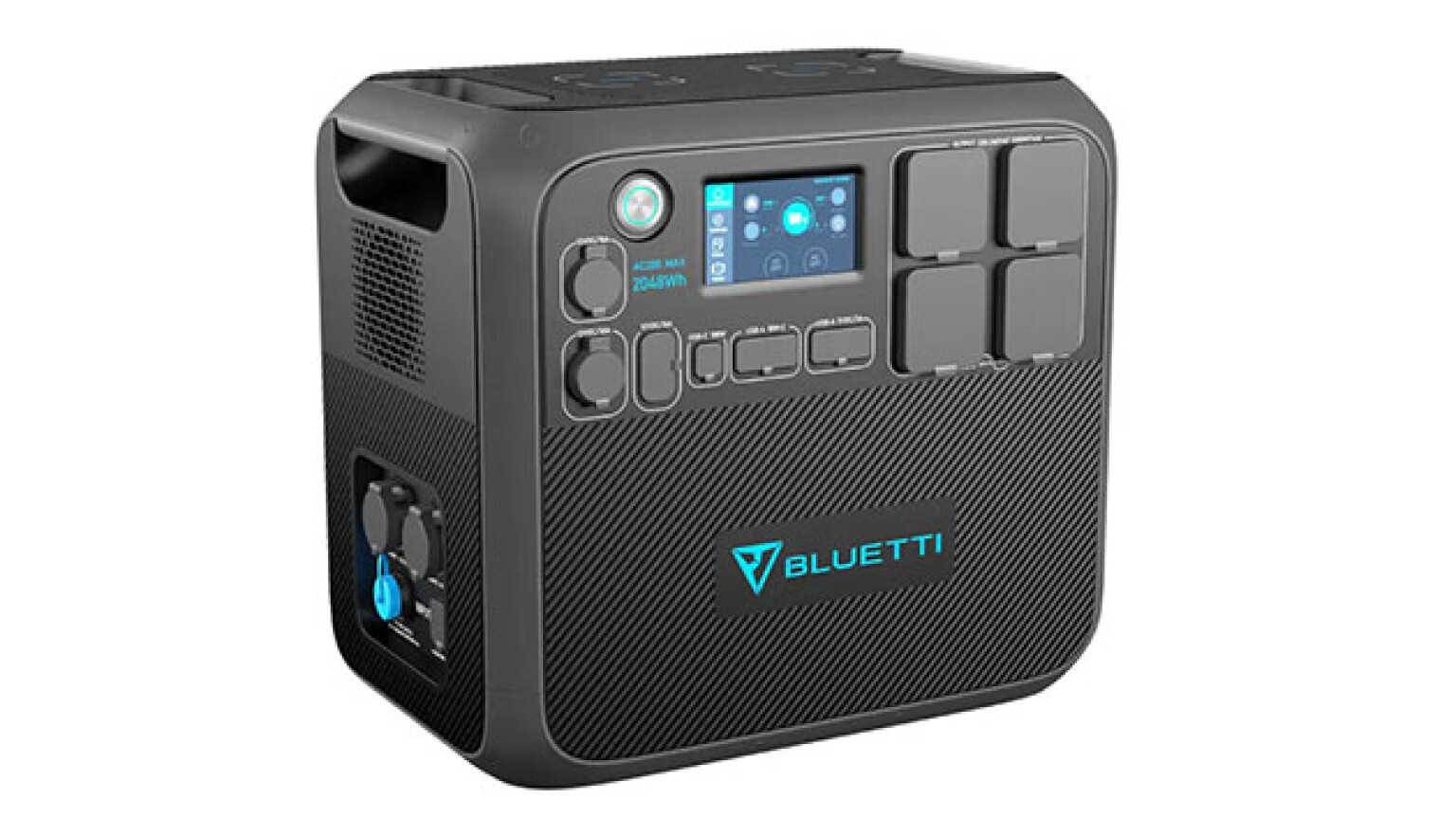





COMMENTS